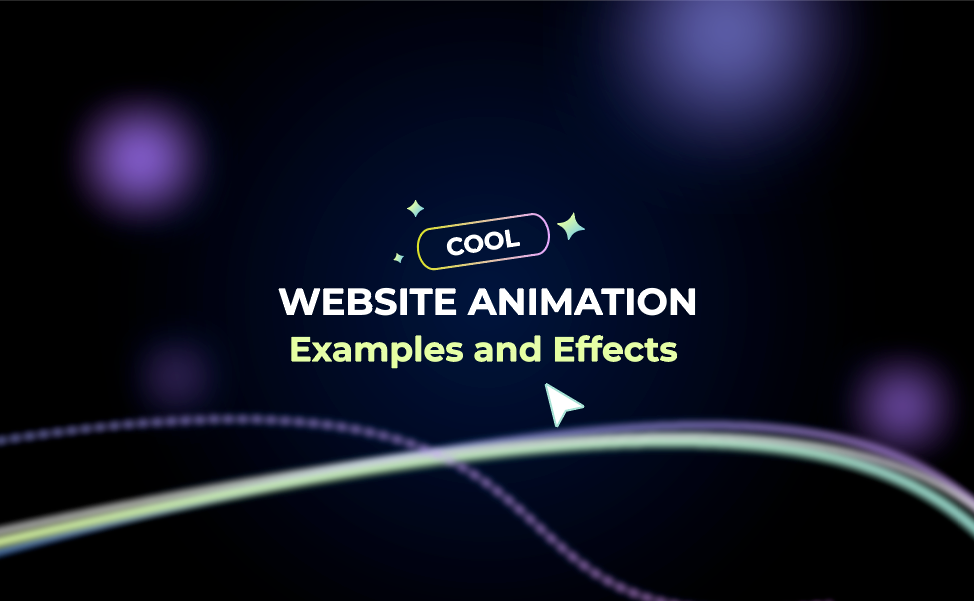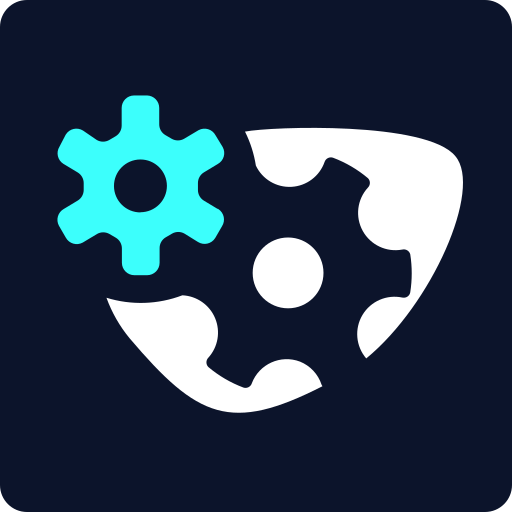Flat and lifeless user experiences are easy to avoid with the right use of animation. To show what’s possible, we’ve gathered 31 examples of website animations and effects that are widely used and appreciated in the design community.
The collection includes everything from smooth morphing animations to creative page transition effects, offering inspiration for making your website more dynamic and interactive.
Table of Contents
- Real-Time Rendering
- Scrollytelling
- AR/VR Motion Graphics
- Expressive Typography Animations
- Real-Time Collaborative Animations
- Ambient Background Motion
- Line Animation Examples
- Self-Drawing Animation Effects
- Morphing Animation Effects
- Animated Logos
- Animated Icons
- Microinteractions | UI Animation Examples
- Character Website Animations
- Faux 3D Animation Effects
- Vertical and Horizontal Scrolling Effects
- Mixed Media Web Animation Examples
- Liquid Motion Effects
- Animated Gradient Effects
- Isometric Animation Effects
- Background Website Animations
- Doodle Web Animations
- Website Page Transition Effects
- Hero Section Web Animations
- Loading Skeleton Screens
- Loading Animations
- Hover Web Animation Effects
- Neumorphic Animation Effect
- Glassmorphic Animation Effect
- Claymorphic Animation Effect
- Animated flipbooks
- Stop-Motion Animation Effect
1. Real-Time Rendering
Hyper-realistic 3D environments add depth, detail, and interactivity to websites. Powered by WebGL and GPU acceleration, these effects let users explore dynamic spaces in real time, creating an experience that feels almost tangible.Designers can use 3D and real-time rendering to showcase products, tell stories, or immerse visitors in visually rich environments, making websites more engaging and memorable.
2. Scrollytelling
Scrollytelling 2.0 uses the act of scrolling to guide users through rich, narrative-driven experiences. Techniques like parallax, reveal animations, and cinematic effects make the story unfold dynamically as users navigate the page.This approach turns ordinary scrolling into an engaging journey, keeping visitors interested while delivering content in a visually compelling and interactive way.
3. AR VR Motion Graphics
AR and VR motion graphics integrate animation into immersive environments, enhancing user interaction and realism. By combining motion with augmented or virtual spaces, designers can guide attention, tell stories, and create experiences that feel dynamic.
4. Expressive Typography Animations
Expressive typography animations use bold, kinetic type, glitch effects, and animated lettering to make a strong visual impact. These animations help convey brand personality, capture attention, and add energy to digital content.

5. Real-Time Collaborative Animations
Real-time collaborative animations allow multiple users to interact with the same animated elements simultaneously.
These animations are particularly useful for collaborative design tools, interactive presentations, or educational platforms, as they enhance communication, encourage participation, and make digital interactions feel more connected and lively.
6. Ambient Background Motion
Ambient background motion adds subtle gradients, particles, and liquid flows to create depth and atmosphere without distracting from content. These effects enhance visual appeal while keeping the focus on the main interface elements.

7. Line Animation Examples
Line animation, especially with the trendy thin line work aesthetic, is an incredibly freeing design and animation style! With the restrictions of conventional composition out the window, you’re left with limitless possibilities for motion design artistry.

Learn about more graphic design trends.
From character animation to page loaders, and delicate vector portraits – the world is your oyster!


8. Self-Drawing Animation Effects
Self-drawing animation, also called stroke-path animation, is a powerful technique that lets you create intricate self-drawing and self-erasing effects.
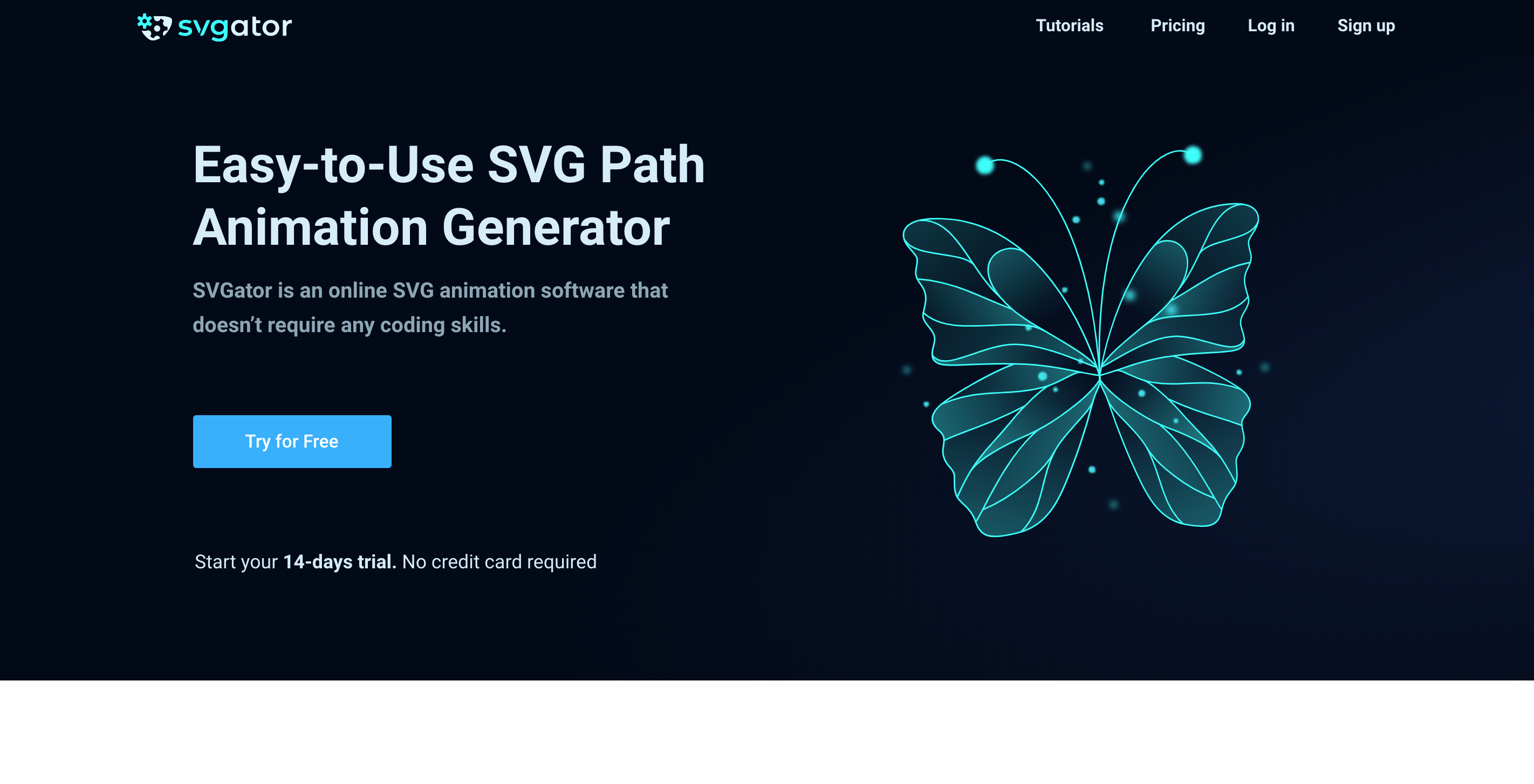
Make self-drawing animations effortlessly with SVGator.
Based on line art, this sketch-like style is ideal for creating self-drawing characters, scroll-based illustrations on landing pages, animated wordmarks, and even backgrounds that appear to be hand-drawn in real time.
Animation for marketing - Made by SVGator
9. Morphing Animation Effects
Morphing animation effects can elevate your transitions, including liquid-style animations and other fast-paced motion graphics. Morphing elements, from simple shapes to detailed logos and characters, opens up endless possibilities for creative visual storytelling.
10. Animated Logos
Logo animations, or any motion graphic featuring your logotype, logomark, or loveable mascot, are phenomenal branding assets.
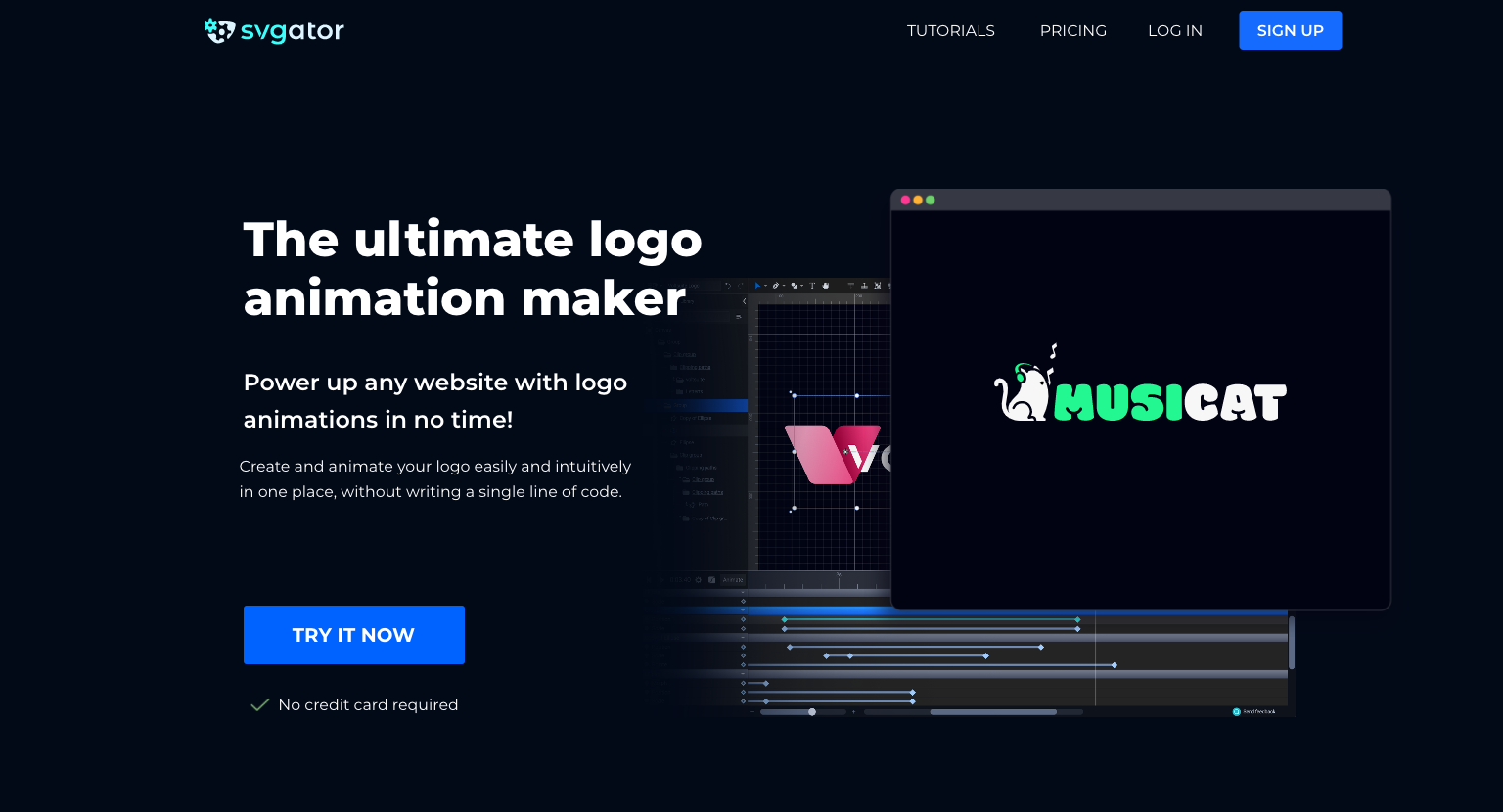
Start animating your logo!
You can rely on them to push your brand identity to the forefront of a customer’s memory – especially when using the same animated logos across all your digital channels. A lasting impression is only one of the advantages of a logo animation!
11. Animated Icons
Animated icons are a simple yet effective way to improve user experience, fitting perfectly with the design world’s focus on interactive UI. Icon animations triggered by clicks or hover actions add subtle details that enhance usability, accessibility, and engagement.

Easily animate your icons, no coding needed.
They create the sense of a two-way interaction between users and your brand while keeping page performance smooth and efficient.
12. Microinteractions | UI Animation Examples
Micro-animations are ideal for design that supports an intuitive customer journey. They can enhance navigation bars, interactive sign-up forms, and carefully designed call-to-action buttons, making digital interfaces both more engaging and easier to understand. Thoughtful UI animations help communicate information clearly while improving the overall user experience.

13. Character Website Animations
Animated characters are a powerful way to make a brand feel more relatable and human. By turning simple shapes into animated characters that mimic human movements, you can create a connection that audiences naturally respond to. Character animations are an effective tool for storytelling and can bring a brand’s voice and personality to life online.

14. Faux 3D Animation Effects
3D-like animation effects add depth, dimension, and a sense of immersion to flat designs through motion graphics. By using techniques such as layering, perspective simulation, scaling, skewing, and rotating, you can create the illusion of three-dimensional space within a two-dimensional environment.

15. Vertical and Horizontal Scrolling Effects
Scrolling effects are powerful tools for enhancing user experience, adding visual interest, and guiding attention on a website. Techniques like carousel effects, horizontal scroll snapping, background transitions, revealing animations, and parallax scrolling can all help direct users’ focus. Combining vertical and horizontal scrolling effects creates a sense of anticipation that keeps visitors engaged throughout the page.
3D kombucha bottle - Made by Outcrowd
16. Mixed Media Web Animation Examples
Mixed media website animations, popular with Gen Z audiences, blend photography and vector graphics to create a fresh layer of creativity. Combining the typical 2D sketch-like style with text, grainy textures, and other modern design elements results in engaging and visually striking web animations.
Collage scrapbooking animation - Made by SVGator


17. Liquid Motion Effects
Liquid motion design effects are a type of organic animation that uses smooth, flowing movements to create visually captivating transitions. They can appear as morphing shapes, liquid text animations, gradient color shifts, or ripple effects.



18. Animated Gradient Effects
Gradient effects, or animated color transitions, can shape the mood of your web design and influence the tone of your content through motion alone. Animated gradients also naturally draw viewers’ attention, making it easier to guide focus to key elements on the page.

19. Isometric Animation Effects
Isometric animated effects offer a creative approach to perspective, using 2D animation to create the illusion of three-dimensional space. To achieve a clear and realistic isometric angle, the x, y, and z axes should form 120-degree angles, and converging lines should be avoided. How you choose to move beyond flat design and add dimensionality is up to your creativity.


20. Background Website Animations
Background web animations may not create as much movement as scrolling effects, but they add atmosphere and depth to a site. Well-designed background animations can introduce users to a brand’s main value proposition while setting the stage for visual interest throughout the page.
21. Doodle Web Animations
Animated doodles bring playful, hand-drawn sketches to life on a website. These quirky animations make interacting with the interface fun and engaging, encouraging users to spend more time exploring and connecting with the content.
22. Website Page Transition Effects
Web page transition effects can take a website to the next level when used thoughtfully. When designed to enhance the user experience with clear visual cues and smooth progression between content sections, transitions like fade-ins and fade-outs, slide effects, or full-page reveals on scroll can make navigation feel seamless and engaging.
23. Hero Section Web Animations
Hero section animations offer a powerful way to make a strong first impression when users land on a website.

Check cool examples of landing page animations.
This is one of the best places to use motion, as it captures attention quickly and conveys key messages effectively.
Interactive hero section - Made by Anton Pecheritsa
24. Loading Skeleton Screens
Motion design and graphic design come together in exciting ways when combined effectively. Using popular bento-style website grids to organize UI elements, along with loading skeleton screens, can improve the user experience and make pages feel faster as they load.
25. Loading Animations
Progression effects, also called loading animations or page loaders, provide users with clear visual cues that their request is being processed. These animations help guide users through their journey on a website and reduce frustration when loading times exceed their expectations.

Start making creative loading animations!
They play a major role in guiding users through their decision journey, preventing frustration when loading times are longer than the user’s expectation (which is typically > 0s).

26. Hover Web Animation Effects
Hover effects let you reveal additional information when users interact with elements such as icons, buttons, or explainer animations. Smooth and subtle hover animations enhance the user interface, making it feel more immersive while helping designers keep the interface clean and uncluttered.
Link hover animation - Made by Aaron Iker
Animated submenu icons - Made by Nicolas Solerieu
27. Neumorphic Animation Effect
Neumorphism combines elements of skeuomorphism and flat design. While it is no longer a top design trend, neumorphic animation effects continue to attract attention. Elements that appear to extrude from the background with a soft, tactile, three-dimensional look are effective for creating intuitive and visually appealing user interfaces.
28. Glassmorphic Animation Effect
Glassmorphism uses principles similar to 3D-like interfaces, creating the illusion of depth, translucency, and texture with layered, glass-like panels. Motion design enhances this effect, making UI elements more visually striking and engaging for website visitors.

29. Claymorphic Animation Effect
Claymorphism, inspired by claymation, brings clay-like aesthetics to web design. Animations that mimic this malleable medium add a playful and engaging feel to websites. Using light and vivid pastel colors, oversized rounded corners, and prominent inner and outer shadows can enhance the effect.

Claymorphic web animation - Made by Filippo


30. Animated flipbooks
Animated online catalogs, with interactive features like GIFs, photo-slideshows, audio and video elements, social media buttons, and map embeds, are a great way to bring your PDF to the next level.
Flipsnack is a great flipbook animation software that allows you to create and publish interactive content materials with a realistic 3D page flip effect. Its user-friendly interface, drag-and-drop editor, and a wide variety of templates make this software accessible to all users, whether we're talking about professional designers or enthusiastic beginners.

31. Stop-Motion Animation Effect
Stop-motion effects create a unique illusion of movement by sequencing individual images or frames. This style offers a nostalgic and highly engaging aesthetic that has captured the attention of many designers.



Check our motion design guide linked below.
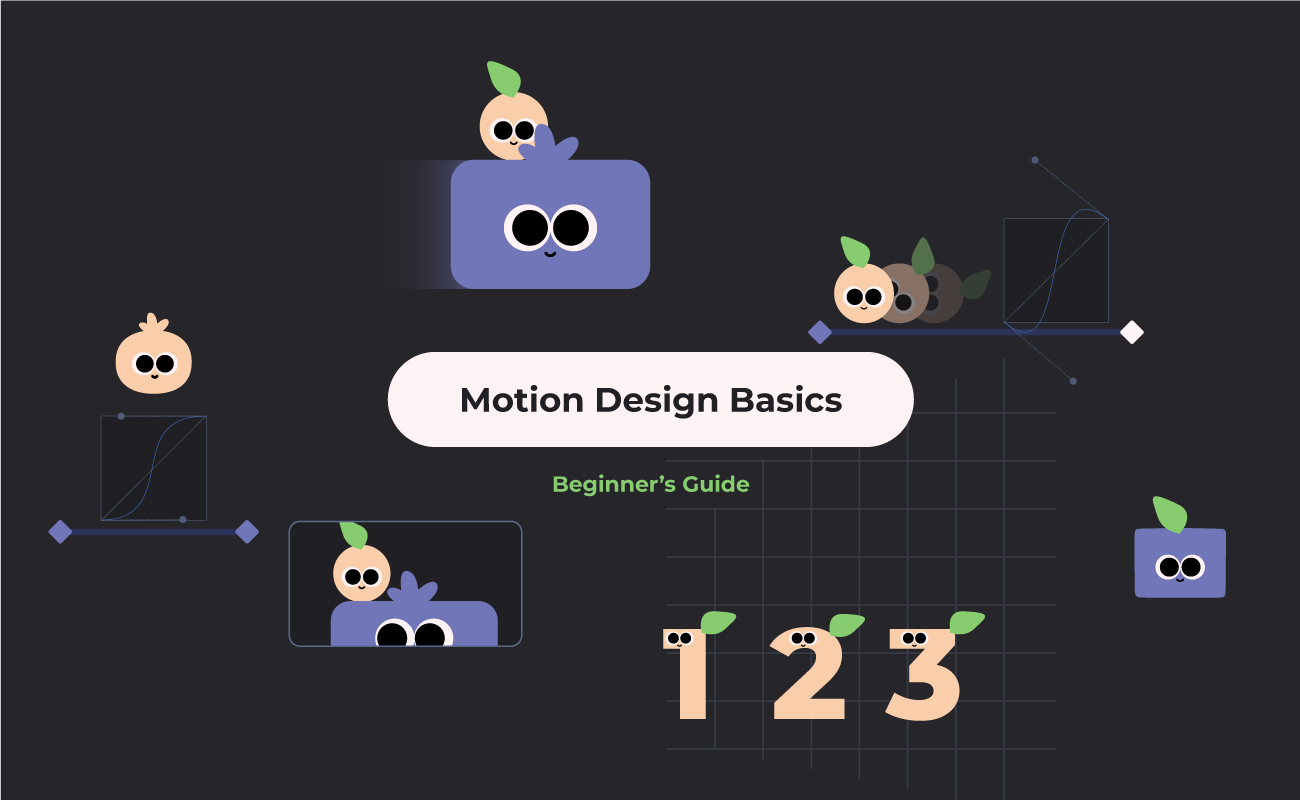
Start learning the basics of motion design.
Final Thoughts
Animation shapes a website, from subtle microinteractions to full-page transitions and 3D effects. Thoughtful motion guides users, communicates brand identity, and makes interfaces more engaging.
Tools like SVGator make creating these animations easier, allowing designers to animate doodles, liquid effects, or sophisticated interfaces with minimal effort.

